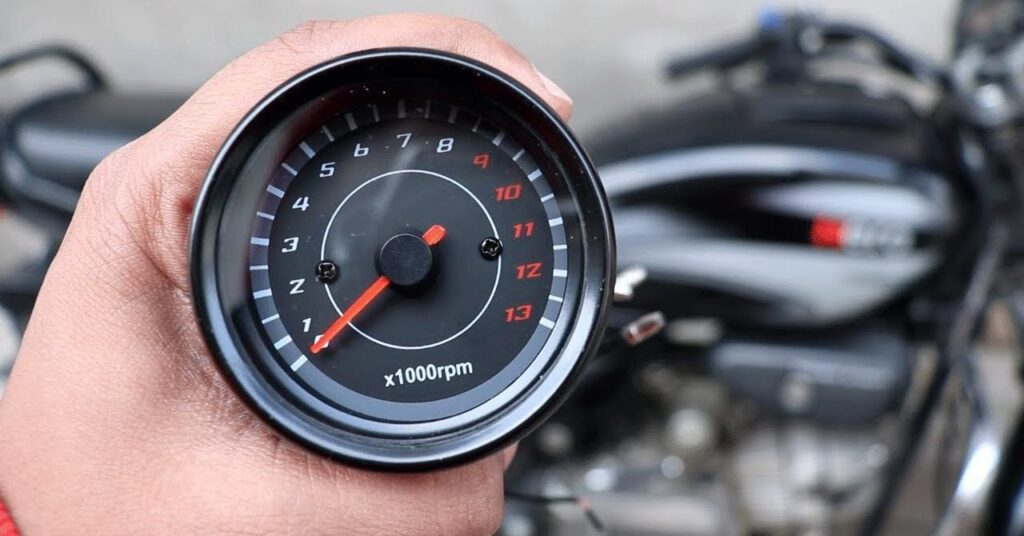Are you curious to know what is RPM in bike? You have come to the right place as I am going to tell you everything about RPM in bike in a very simple explanation. Without further discussion let’s begin to know what is RPM in bike?
What Is RPM In Bike?
For motorcycle enthusiasts and riders, the world of mechanics and engineering is a fascinating realm that contributes to the exhilarating experience of riding on two wheels. One crucial technical term that holds the key to a bike’s performance is “RPM,” which stands for Revolutions Per Minute. RPM is a vital metric that reveals the heart of a motorcycle’s engine dynamics, power delivery, and overall performance. In this blog, we’ll take a closer look at RPM, its significance, and how it shapes the riding experience.
Decoding RPM: Revolutions Per Minute
RPM, or Revolutions Per Minute, is a measurement of how many complete rotations an engine’s crankshaft makes in one minute. In the context of motorcycles, it refers to the number of times the engine’s piston completes a full cycle (intake, compression, power, and exhaust) within a minute. RPM is often displayed on the bike’s instrument cluster and provides valuable insights into the engine’s activity.
Significance Of RPM In Motorcycles
- Engine Power: RPM is directly related to the power output of the engine. The higher the RPM, the greater the power generated by the engine. Motorcycles are designed to operate efficiently within specific RPM ranges, optimizing power delivery for different riding scenarios.
- Torque Delivery: RPM influences the torque output of the engine. Torque is the rotational force that propels the bike forward. Engines often have a “torque curve” that illustrates the relationship between RPM and torque, indicating the RPM range where the engine delivers maximum pulling power.
- Gear Shifting: Understanding RPM is crucial for proper gear shifting. Shifting gears at the right RPM ensures a smooth and responsive acceleration. Riders need to upshift before the RPM reaches a point where the engine’s power and torque start to drop off.
- Fuel Efficiency: Maintaining an optimal RPM range contributes to better fuel efficiency. Riding at excessively high RPMs can lead to increased fuel consumption, while lugging the engine at very low RPMs may result in poor fuel efficiency.
- Engine Longevity: Operating the engine within its recommended RPM range promotes longevity. Excessive stress on the engine due to high RPMs or lugging can lead to premature wear and tear.
- Performance and Riding Experience: RPM directly impacts the bike’s performance characteristics, including acceleration, top speed, and overall responsiveness. Different bikes are designed to excel in specific RPM ranges, catering to various riding styles.
Conclusion
RPM is the heartbeat of a motorcycle’s engine, revealing its power potential and performance capabilities. Whether you’re cruising down a scenic highway or navigating through city traffic, understanding and effectively managing RPM is essential for maximizing your bike’s performance, fuel efficiency, and longevity. As you twist the throttle and feel the surge of power beneath you, remember that RPM is the language through which your motorcycle communicates its exhilarating performance and responsiveness, making every ride an unforgettable experience.
FAQ
What RPM Is Good For Bike?
In general, your RPMs should be between 2,000 and 3,000 while riding a motorcycle. A better answer is “it depends”. It depends on whether you’re riding in the city or the country. It depends on what type of engine situation you’re working with.
Is Higher RPM Better For Bike?
Higher RPM causes the bike to vibrate, which can lead to problems on the rider’s back, legs, and feet. However, a medium RPM range provides a smoother riding experience. Lower RPM in bikes also results in higher fuel efficiency and a more seamless experience.
What RPM Should You Ride At?
To reduce wear and tear to the engine and ensure you get maximum fuel efficiency, it’s best to stay in the 2000-3000 RPM range when driving on a highway at 60-70 mph. If your car seems to be operating at a higher RPM in such a scenario, it’s better to head to an auto shop and check the engine.
What Is 1000 RPM In Bike?
1000 RPM denotes that whatever the vehicle’s meter reads is multiplied by 1000 to get the revolutions per minute. If the needle on a gauge with RPM*1000 written on it points to 1, the RPM is 1000. These gauges can be found on vehicles with high-revving engines, such as motorcycles and cars.
I Have Covered All The Following Queries And Topics In The Above Article
What Is RPM In Bike
What Is RPM In Bike Engine
What Is The Meaning Of RPM In Bike
What Is RPM Limit In Bike
What Is The Full Form Of RPM In Bike
What Is Ps@RPM In Bike
What Is RPM In Bike In Hindi
What Is RPM Meter In Bike
What Is Meaning Of RPM In Bike
What Is RPM In Bike In Tamil
What Is The Use Of RPM Meter In Bike
What Is The Use Of RPM In Bike
What Is RPM And Torque In Bike
What Is The RPM In Bike
What Is RPM In Bike
What does RPM do in a motorcycle
What is rpm in a bike?






